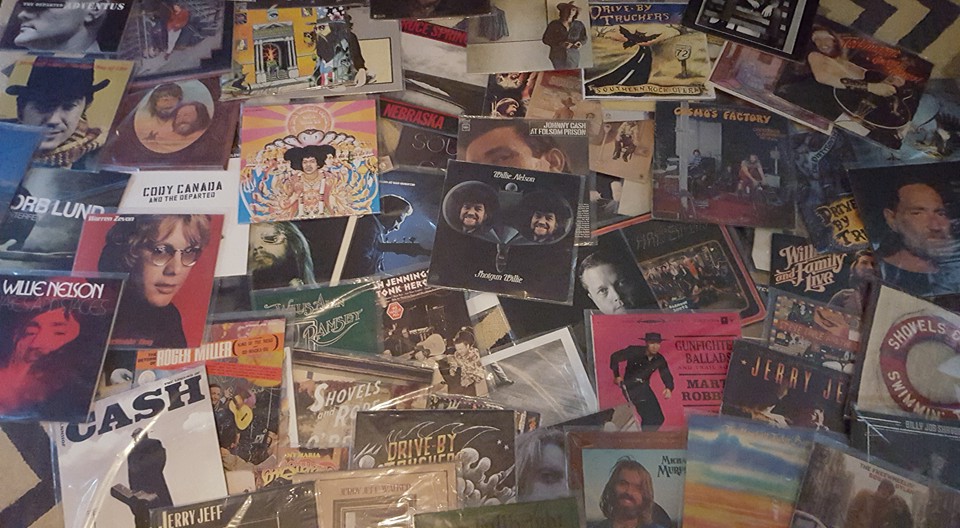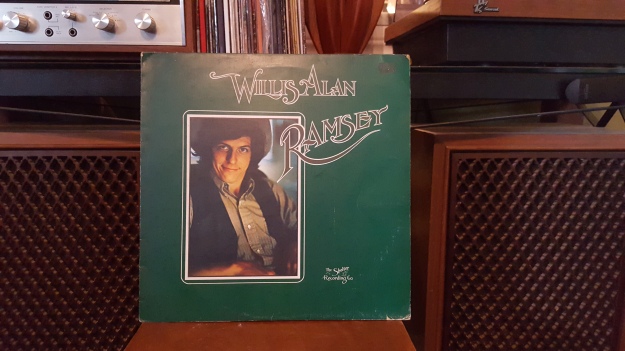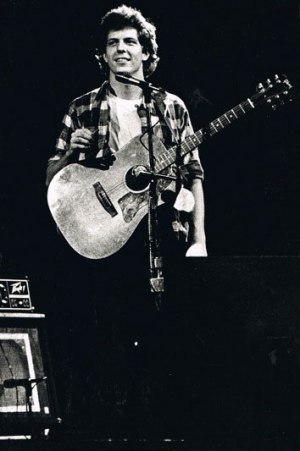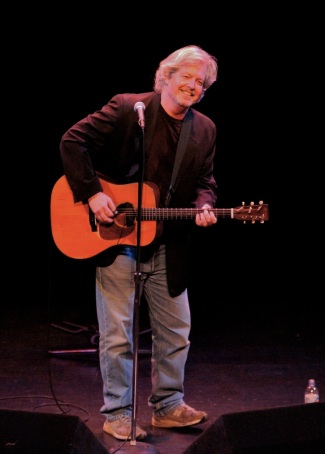If you have never heard of Willis Alan Ramsey; Actually, I should say, you have probably never heard of Willis Alan Ramsey. You have also probably never heard of the lone album that bears his name. Released in 1972 on Leon Russell’s Shelter Records, the self-titled album lives in a somewhat mythological place in the folk, blues, and Texas music worlds. It is remembered as much for the songs as the mystery that surrounds their composer. The transcendent album remains the only recording ever released from an artist, lauded by many of his peers as one of the truly great writers and singers of all time.
Willis
Willis Alan Ramsey was born in Birmingham, Alabama in 1951. When he was around ten years old, his family moved to Dallas, Texas, where he spent most of his youth. This combination of being raised in the Deep South and Texas would come to play an important role in his songs. He spent his high school years singing in the choir and playing in cover bands. It was around this time that a friend first introducsed him to the idea of writing his own songs. He had two failed attempts at college, first in Memphis, and then Austin. College never worked because the muse was calling, and so he dropped out to become a songwriter. He soon found his way into the Texas folk circuit, playing the clubs between Austin, Dallas, and Oklahoma. He fell in with the likes of Steve Fromholz, Ray Hubbard, B.W. Stevenson, and others. (I just have to stop for a second a say, what an amazing time. To think you could walk in a place and see all of those people in the same setting is just ridiculous. I was born 30 years too late.) He spent some time on the folk circuit, honing his craft and studying his heroes. (He cites Woody Guthrie and Robert Johnson as his two heroes and biggest influences). A few years later, a chance meeting with several bona fide rock & roll legends would be the break he needed to get his songs on record. In 1970, Leon Russell and The Allman Brothers were playing an outdoor festival in Austin, and the bands happened to be staying at the same hotel Willis was crashing at. Willis had no intention of letting this opportunity slip away, so he walked around the hotel until he bumped into Leon Russell, Greg Allman, and Dickey Betts (insane right?!). He convinced these three to listen to a few of his songs, and proceeded to floor them. They all immediately invited him to their studios to record his songs. Allman and Betts asked him to come to their place in Macon, Georgia, while Russell invited him to his studio in L.A. He tried both but settled on recording with Leon Russell and his Shelter People. At the time, Russell had one of the first, world class home studios. He also had people like J.J. Cale hanging around. Willis found the level of fame and talent he was now surrounded by to be a little intimidating. He realized that he really needed to get it all together to hold his own with these incredible musicians, and it took him a little while. After multiple recording sessions in L.A., Memphis, Nashville, and for some reason Tyler, Texas, the album was finally released on Shelter Records in May of 1972. They obviously didn’t know it at the time, but the record they had just made would become not only critically acclaimed, but also the catalyst for one of the strangest and most mysterious stories in music history.
Willis shortly after he returned to the States. Courtesy youtube user Steve Swinnea.
The Record
The cover of the record follows suit with many of those great records of the seventies, featuring simply a picture of Willis on the front. The young man with the cocked cowboy hat and the sly smile belies the greatness and writing prowess hidden inside those dark green cardboard flaps. The songs contained within tell the stories of less than reputable characters, American heroes, women who inspire song, and even some furry creatures who can’t keep their hands off each other. There are a total of eleven songs on the album, of which nine have been covered by other artists. The opening track, The Ballad of Spider John, which tells the story of a petty thief who falls in love only to lose it because of fear and dishonesty, was covered by Jimmy Buffett on his 1974 release, Living And Dying In ¾ Time. The second song on the album is called Muskrat Candlelight. This song was recorded under the name Muskrat Love, first in 1973 by the band America, and then in 1976 by The Captain & Tennille. It was a big hit for the latter, and thus is one of the songs of Willis’ that the average American might know. This is one of the two songs on the record that tells the story (beautifully & poetically) of two small animals getting it on. The next song on the record, Geraldine and The Honeybee, tells a similar story. The middle of the record contains three songs that were all covered by critically acclaimed and influential artists. The first, Satin Sheets, was covered by Waylon Jennings on his 1977 album titled Ol’ Waylon. Some of y’all might remember that record because it contained the wildly popular song Luckenbach, Texas (Back to the Basics of Love). Next is Goodbye to Old Missoula, which was recorded by Jimmy Dale Gilmore, a founding member of The Flatlanders. The next song, Painted Lady, is an ode to honky tonk women. This song was recorded by one of the seminal members of Austin’s progressive/outlaw movement, the late great Rusty Wier. Wier put this song in his excellent 1974 solo debut Stoned, Slow, Rugged. Willis follows this incredible stretch of songs with Watermelon Man and Boy From Oklahoma. The former is a song about food and love and the latter is a song about Willis’ hero. Boy From Oklahoma is his ode to Woody Guthrie, and a beautiful portrait of the great American songwriter. Willis closes the album with one of my all-time favorite songs, Northeast Texas Women. While the title is geographically suggestive, the song is really a celebration of all Texas women. He tells us that whether you’re looking up north, out west, or even for something strange down in old La Grange, they all have “kisses that are sweeter than cactus.” The song turns into an extended jam session at the end, and Willis’ dog Odlio even makes an appearance. (If you’re already a fan of Willi’s, and like me always wondered what they were saying at the end; it’s Odlio. Thanks to Mattson Rainer of KNBT in New Braunfels for clearing that up). Jerry Jeff Walker recorded a revved up, electric version of this song on his monster 1977 album, A Man Must Carry On. This song was my first exposure to the greatness of Willis Alan Ramsey, though I would not discover him till several years later.
These songs live somewhere in the realm of bluesy folk, folky country, and somewhere else that is escaping my descriptive powers. The words coming through the speakers defy the age of the person singing them. One would expect the person writing and singing these words to have spent at least half a century on this earth. Nope. Willis was not even 21 years old when they were recording this album. Besides the writing, it was Willis’ voice that made these songs so magical. That Alabama/Texas mixture gave him an incredibly unique drawl and delivery with his words. Hearing his voice for the first time was like hearing Ray Charles or Randy Newman for the first time; it’s that powerful. If you are part of my generation, then the first time you probably heard Randy Newman’s voice was singing that song You’ve Got A Friend In Me, from the Toy Story movie. I remember hearing that voice as a child and thinking that it had to be coming from God, or certainly someone not of this mortal world. I imagined that a sound like that could only come from a heavenly being, who was beyond giant in stature and lived somewhere far away from this planet. I had not heard Randy Newman in years when I first heard Willis Alan Ramsey, but I got that same feeling. Willis’ voice comes from that same celestial place. When you hear it (at least for me), you think that there is almost no way that that sound is coming out of a human. It is all encompassing and yet sharp and poignant. It feels gigantic and intimate all in the same breath. It surrounds you with a warmth that is completely southern, yet feels worldly. I don’t think I was really convinced that it was real until I witnessed it happening in front of me.
Apart from the writing and the supernatural voice, the album also had another key element that made it so great. The production. Now that’s not something one would typically think about when discussing a good folk record. It’s certainly something that could come up when discussing a bad folk record. To understand this, we need not look farther than the greatest songwriter to ever suck air not named Bob Dylan. This would of course be Townes Van Zandt. Townes has some really bad studio albums (think Buckskin Stallion) because the production is, well, just even there in some cases. Steve Earle (the biggest Townes disciple on the planet) has said that he didn’t think Townes had any good studio albums, for that very reason. I think the consensus is that Townes’ best record was the Live At The Old Quarter album. This album was nothing but him, a guitar, and a microphone. So my point is that you typically don’t want to hear much of anything else on a folk record. Somehow Willis found a way to get in that sweet spot where the music and production took nothing away from the songs themselves. They were able to walk that line and came away with something really special.
Now Things Get Weird
So in 1972, Willis Alan Ramsey released this incredible record right as the scene in Texas was starting to garner national attention. It should have been huge right? Well, nothing happened. Things were changing at Shelter Records and he received little support from the label for promotion or a follow up tour to support the record. After some financial negotiations failed, he never returned to their studio and spent the next eight years touring the folk circuit until his contract ran out. Then around 1980 he became disenfranchised with performing all together. Around this time, the movie Urban Cowboy came out and completely changed the bar and club scene, especially in the Lone Star State. Venues were now about dancing, mechanical bulls, mating rituals, and rowdy hell raising. The music became background noise at many clubs. If you weren’t playing something the crowd could dance to, then not many paid attention (Charlie Daniels got pretty big at this time). It was certainly not the scene for a cowboy/hippie poet to be finger picking his bluesy poems. So Willis just kind of fell off the face of the earth. Actually, he moved to Europe. He spent most of the 80’s in Britain and Scotland before returning to the states sometime around 1990. Around this time he would meet his wife Alison Rogers, who apparently convinced him to stay in the states. He also started playing the off gig here and there and even revealing some new songs. Between then and now he has popped up once or twice every couple of years to play a gig, (often times in very unusual places) or on a songwriting credit. He and his wife Alison penned Lyle Lovett’s hit songThat’s Right (You’re Not From Texas). He also co-wrote (with Lovett) the absolutely beautiful song, North Dakota, which appears on Lyle Lovett’s 1992 album Joshua Judges Ruth. In just the last couple of years he has started showing up at the insanely good time that is the Texas comes to Colorado music festival known as MusicFest, which happens every year in Steamboat Springs, Colorado.
It’s so good to see him re-emerge back into the public eye, even if it may just be once or twice a year. But……… It’s now been 43 years since his one and only record came out, and we should all be grateful that it exists for our ears to consume, but why nothing more? We know he has new songs in the bag, and has for a while. As you can imagine, every time he pops up somewhere he is faced with the questions about when the new one is coming. His answers to this are usually as vague as to why he disappeared for so long. Typically it’s one of two things; “probably next year” or “what’s wrong with the first one” (which is of course nothing at all). There are a few reasons floating around out there as to why he took the path he did, but few hold much water. It’s been written that when this album was recorded Willis was an individual completely out of touch with the recorded music industry and how it all worked. This seems like a reasonable statement. It’s never been a secret that he was a pretty eccentric guy who did things nobody’s way but his own. A friend of mine who contributes to Texas Monthly once shared a story about Willis with me that was relayed to him during an interview with Ray Wylie Hubbard. The Wylie Lama said that during one year in Dallas, every time he went to Willis’ house the entire living room had been painted a different color. When Ray asked him why he was doing all of this, his dead serious response was that he had not yet found the right color. Weird yes, but Frank Zappa was also a pretty weird guy and he made lots of records. There were also reports that Willis was very difficult to work with. He himself has admitted that he is an “audio purist” and does not care for the sound of most recordings. Again, this seems like a somewhat substantial reason, but it’s still not enough. Ryan Adams has been making records for years and we’ve all heard the stories about him.
Whatever the reasons are, we may never know. Lets just be glad we have the one. Maybe some day we’ll get to hear that magical voice singing a new song. I’ve heard some of them live, and Willis’ hasn’t missed a step. But for now, the one record will do just fine. If I have intrigued you and you want to get a hold of it, well, it can be hard to find. To my knowledge, it was never re-printed on vinyl, so if that’s what you’re looking for, it can take some work. I bought my vinyl copy from a guy in England. It was the only available copy I could find on the internet after about a month long search. The album was released on CD sometime in the early ninety’s, but even those can be hard to find. The album isn’t on iTunes, but you can hear it all on YouTube. Well, I think I have said all I can say about Willis Alan Ramsey. If you’ve never heard his songs, (which I suspect you haven’t) you should find a way to. You can thank me later.
Adios,
~Tumbleweed TAD~
“Marketability might be a problem for me, because all my songs are about food, sex, and little animals. But I grew up on blues and Disney, and that’s what comes out” – W.A.R.
Willis Alan Ramsey Leon Russell Shelter Records Lyle Lovett
Courtesy youtube user Joe Maynard



